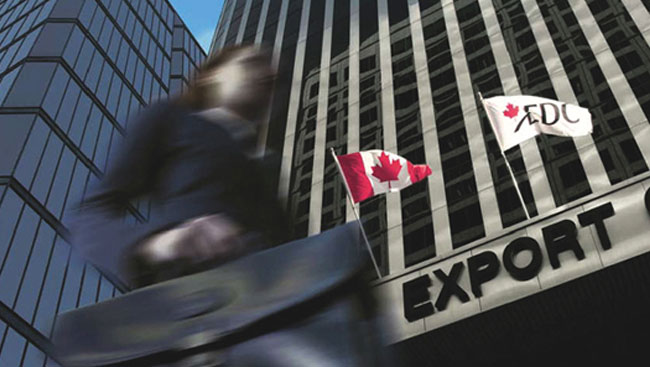What do the federal government, responsibility, and transparency have in common? When it comes to handing money to corporations, not much. Working class Canadians watch helplessly as their hard-earned money is taxed away to be put into the laps of large businesses- often the same ones that receive it year after year. These dollar amounts are too large, the disclosure too small, and the criteria for receiving this money too obscure. And things are actually getting worse.
Bombardier, the Quebec aerospace company that has received $4 billion in government help since 1996, exemplifies many of the problems. In 2015, the Quebec government “invested” a billion dollars to get a 49.5 percent stake in production of the C-series passenger jet. Later, the federal government added another $372.5 million. So generous was the government’s help that the United States took a preliminary step to put a large tariff against the jet. As a result, Bombardier gave half of the program to Airbus, a European company, for free. If anyone needed proof that these handouts to corporations do not help Canada, it was right here.
Bombardier hates to admit how much money they have received from governments or repaid. The company has gone to court ten times in the past nine years to suppress the release of such information. These legal efforts have swung the pendulum away from the taxpayer’s right to know and towards corporate confidentiality. In 2002, an information request to Technology Partnerships Canada on the recipient corporations and the status of their loan repayments was disclosed in full. By 2011, the response to a similar request withheld roughly three-quarters of this information.
A similar story of past disclosure, present denial just occurred with the auto industry…we think. In 2010, Export Development Canada (EDC) “loaned” more than a billion dollars to Chrysler just as it went under. The Canadian government never expected to be repaid but gave the money anyway- the equivalent of loading cargo onto a sinking ship. Earlier in 2018, the Canadian Broadcasting Corporation (CBC) formally requested documents on the matter, but the response was highly censored. Documents showed that the finance minister, at the request of the EDC, forgave a loan to get it off the books. However, both the loan recipient and the amount forgiven were blanked out.
Context and publicly available documents suggested this was the $1.15 billion still on the books for “old” Chrysler (its pre-bailout form). However, none of the four spokespeople contacted by the CBC would confirm this. Dan Lauzon from Finance Canada admitted, “write-offs are a last resort and are rare. We are unable to speak to the specifics of any particular write-off given commercial confidentiality.” Another spokesperson said the public will have to wait for the annual report coming up this fall.
Although the Canadian and Ontario governments lost $3.7 billion in the 2010 auto bailout, sequels have followed. Prior to her election defeat, Premier Kathleen Wynne stood beside the prime minister at a Toyota plant to announce $220 million towards a new $1.4 billion assembly line. This meant a $488,888 subsidy for each of the 450 jobs created. Five days later, Toyota announced a record global profit of $29 billion. Honda also received a combined $83.6 million from these governments.
In December of 2017, The Walrus took a close look at the EDC, which it called “Inside One of Canada’s Most Secretive Agencies.” It suggested that the EDC not only combined big money with little disclosure, it also added a third problematic element: government help for corrupt companies. Two days after the damning article, the EDC “terminated its $41 million loan to South Africa’s notorious Gupta family intended for the purpose of a luxury Bombardier jet.” The article also noted that Bombardier had been involved in corruption scandals in Sweden, Azerbaijan, Russia, and South Korea.
At $100 billion, the EDC already loans out 20 times more than its United States equivalent, the Import-Export bank. But, in 2017, the prime minister announced Canada would take its investment game into even farther and riskier territory and develop a Development Finance Institution (DFI). The purpose of a DFI is to target money at areas too risky for the private sector, such as Afghanistan, or impoverished regions of more developed countries, such as Brazil or China. The Walrus says, “It doesn’t take much imagination to conceive of how such institutions can serve as highly honed tools of corruption—smaller loans, dispensed with little due diligence, tracked with slack oversight.”
Maybe the entire practice of corporate welfare is itself corrupt. After all, the financial accountability office in Ontario reported that the province doesn’t even try to assess whether business tax breaks and subsidies do any good. If they had, they might have reached the same conclusions as James T. Bennett in his book “Corporate Welfare: Crony Capitalism That Enriches the Rich.” Any government that claims to support the middle class betrays itself when it taxes and indebts its people, only to hand it to those who are unworthy and better off.



